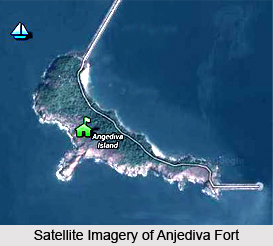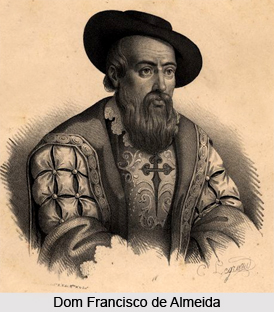 History of Anjediva Fort, Goa speaks about the historical accounts which had occurred on Anjediva Island which motivated the Portuguese to erect the Anjediva Fort off the coastline of the state of Karnataka. Dom Francisco de Almeida, the Viceroy of the Portuguese king migrated to India in March 1505. He had been ordered to ensure the construction of four forts in the country including those at Quilon, Cannamore, Cochin and Anjediva. The proposed fort would enable the sea merchants from Egypt, Portugal, Greece and Arabia to make a waterway stop from and to the East while they carried the Indian spices.
History of Anjediva Fort, Goa speaks about the historical accounts which had occurred on Anjediva Island which motivated the Portuguese to erect the Anjediva Fort off the coastline of the state of Karnataka. Dom Francisco de Almeida, the Viceroy of the Portuguese king migrated to India in March 1505. He had been ordered to ensure the construction of four forts in the country including those at Quilon, Cannamore, Cochin and Anjediva. The proposed fort would enable the sea merchants from Egypt, Portugal, Greece and Arabia to make a waterway stop from and to the East while they carried the Indian spices.
The great sailor Vasco da Gama had arrived in India during the year 1498 while he was returning to his homeland Portugal from Calicut in India. The legendary sailor had to repair his vessels and also had to accumulate water from the regional springs of the Anjediva Island as the water was considered to be of superior quality. This historical incident had prompted the construction of Anjediva Fort and he had again visited this place during 1502. It is believed that Vasco da Gama had greatly appreciated the availability of fresh and safe water on Anjediva Island and therefore he had decided to arrange this region for docking his ships particularly during the south-west monsoons. Alongwith Gaspar da Gama (a Jewish trader who later converted to Christianity), Vasco da Gama proposed the erection of a fort at Anjediva before the king of Portugal as it would assist the Portuguese settlers in winning over the governance of the island of Goa.
 Dom Francisco de Almeida immediately commenced the developmental task of Anjediva Fort and he was so dedicated in his efforts that he declined a royal invitation from the then ruler of Vijayanagara kingdom. On 13th September, 1505, Almeida arrived in Anjediva and started working on the construction of the fort. The king of Vijayanagara did not resist the erection of this fort and the local residents of Anjediva provided the raw materials like palm leaves, lime, timber and cane for building the fort. A period of nearly 21 days and three months were spent in building the fort.
Dom Francisco de Almeida immediately commenced the developmental task of Anjediva Fort and he was so dedicated in his efforts that he declined a royal invitation from the then ruler of Vijayanagara kingdom. On 13th September, 1505, Almeida arrived in Anjediva and started working on the construction of the fort. The king of Vijayanagara did not resist the erection of this fort and the local residents of Anjediva provided the raw materials like palm leaves, lime, timber and cane for building the fort. A period of nearly 21 days and three months were spent in building the fort.
The fort was made on rocky surfaces and surrounded by towers, and an exorbitant price was incurred for creating the defence fortifications in the fort. Stone and clay were amongst the main raw materials of Anjediva Fort as the island lacked lime stone as well as several other building materials. The fort was employed as a strong military fortification which enabled Almeida to defeat strong enemies like Timoja. When Bijapur`s Adil Shah launched a fierce attack against the Portuguese power in India, D. Lourenco, who was the son of the Viceroy Almeida also participated. In this battle Adil Shah lost but the Portuguese were heavily injured and Almeida was seriously wounded.
Thereafter, the contribution of the Anjediva Fort as a defence organisation was doubted and so it was eventually isolated. During 1506, Dom Francisco de Almeida destroyed the fort and its ruined apartments are still observed till the present day. The garrisons of the fort were located at Cochin and Cannamore Forts which guaranteed safeguarding of maritime trade. Ill weather conditions, attacks from enemies and absence of proper maintenance encouraged the Portuguese from deserting the fort. The Viceroy Count of Alvor had refurnished the fort in the year 1682. More than 600 people used to reside in Anjediva Fort which contained facilities equivalent to the Jesuit college and also a Portuguese school.
The fort slipped into the control of a Governor during 1768 and during this point of time 350 people inhabited the fort. However, fearing enemy attacks, the Portuguese deserted the fort yet again. When this part of the county was invaded by Tipu Sultan and also the king of the costal kingdom of Bednore, Christians and Hindus resided in the fort. The Anjediva Fort and also the Anjediva Island became a portion of India on 19th December, 1961 following the `Operation Vijay`. Operation Vijay was a military operation which helped Indians to get rid of the Portuguese settlers from the nation.



















